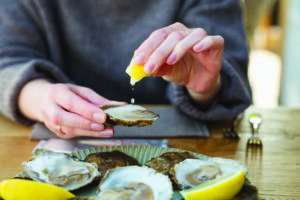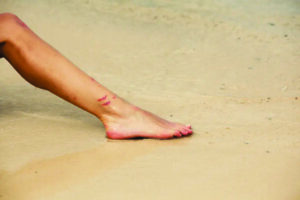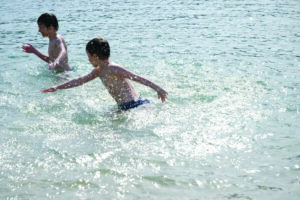
Woman’s leg with coral cuts on beach.About 75% of the Louisiana cases are from wound exposure to seawater. LoloStock – stock.adobe.com
By Tracy Swartz
(Source New York Post)
Let this sink in.
A dangerous, salt-obsessed bacterium is wreaking havoc along the Gulf Coast.
Several dozen cases of Vibrio vulnificus and nine deaths have been reported so far this year across Florida, Louisiana, North Carolina, Alabama and Mississippi.

The rod-shaped bacterium lurks in warm, brackish waters. It can enter your body when you eat raw or undercooked shellfish, particularly oysters, or expose an open wound to seawater.
“Vibrio has the potential to cause severe infections, including invasive soft tissue infections (sometimes called ‘necrotizing fasciitis’ or ‘flesh-eating bacteria’) and bloodstream infections,” Dr. Andrew Handel, a pediatric infectious disease specialist at Stony Brook Children’s Hospital, told The Post.
Here’s what you need to know about this rare but potentially deadly infection.
What is Vibrio vulnificus?
Vibrio vulnificus was initially reported in medical literature in 1976, though it’s believed to date back to ancient times.
It’s part of the broader Vibrio genus of bacteria that live in coastal waters.

This group includes Vibrio cholerae, the pathogen that causes the diarrheal disease cholera, which is typically transmitted through contaminated food or water.
‘Flesh-eating bacteria’ cases rising across the Gulf Coast — killing 1 in 5 who contract the nasty infection
“There are more than 200 recognized species of marine (saltwater) Vibrios, but only a few species cause significant public health problems, particularly foodborne illness, skin infections and wound infections,” a spokesman for the North Carolina Department of Health and Human Services told The Post.
For its part, Vibrio vulnificus needs salt to survive, which is why it occupies warm seawater, especially brackish environments, where freshwater and saltwater mix.
“It thrives in warm water, so cases tend to peak during the summer and are more common in the southern US around the Gulf Coast,” Handel said.
Where have cases been reported?
The Florida Department of Health has logged 13 cases with four deaths as of July 24.
There were 82 cases and 19 deaths last year, up from 46 cases and 11 deaths in 2023.
The agency noted an “unusual increase” in infections in some parts of Florida last year because of Hurricane Helene, which struck the state at the end of September last year.
Louisiana authorities have confirmed 17 cases, including four deaths, as of July 30.
About 75% of the cases are from wound exposure to seawater.
North Carolina has recorded 59 Vibrio cases and one death this year as of July 31. The data includes illnesses from the vulnificus and cholera strains, as well as other Vibrio infections.
The Mississippi State Department of Health told The Post it has confirmed 13 Vibrio reports so far this year, down from 50 last year. No one died from Vibrio-related causes in 2024 or so far in 2025.
Seafood consumption seems to be a common culprit. The state’s data includes cases from Vibrio parahaemolyticus, which tends to cause diarrhea.
An Alabama Department of Public Health spokesman told The Post that 25 cases of vibriosis have been reported this year through Aug. 1, including nine hospitalizations. No one died. There were 55 cases in 2024.
What are the symptoms?
Vibrio vulnificus symptoms depend on the type of infection. Exposing an open cut to contaminated water can cause high fever, intense pain as well as swelling and redness at the wound site.
“The symptoms from skin infections can progress very quickly,” Handel said.
A soft tissue infection can lead to skin breakdown, ulcers and fluid-filled blisters. Significant tissue damage can occur in severe cases.
People who have eaten contaminated shellfish could experience severe vomiting and diarrhea, which may lead to dehydration. Stomach pain, fever and chills might follow.
Once in the bloodstream, Vibrio vulnificus can cause rapid and serious illness.

A bloodstream infection can spur a fever, chills, dizziness, confusion, dangerously low blood pressure, a fast heart rate and blistering skin lesions.
The Florida Department of Health reports that infections that hit the bloodstream are fatal about half the time.
The risk of life-threatening complications is higher for people who are older or immunocompromised.
There is no evidence of person-to-person transmission.
How is Vibrio vulnificus treated?
Vibrio vulnificus is diagnosed by testing blood, wound fluid or stool samples.
Antibiotics are administered immediately. In aggressive cases, amputation may be needed to remove infected or dead tissue.
What can you do to protect yourself from infection?
Handel recommends steering clear of open bodies of water, like the ocean, rivers and estuaries if you have cuts or scrapes.


